It looks like you're using an Ad Blocker.
Please white-list or disable AboveTopSecret.com in your ad-blocking tool.
Thank you.
Some features of ATS will be disabled while you continue to use an ad-blocker.
21
share:
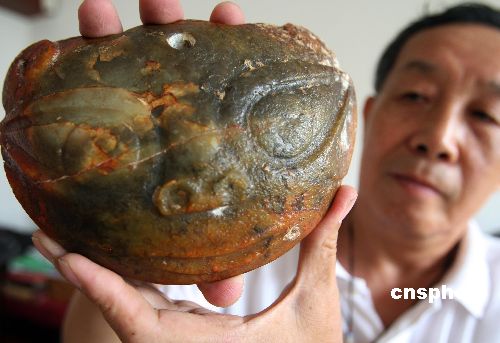
The Neolithic period, which began in China around 10,000 B.C. and concluded with the introduction of metallurgy about 8,000 years later, was characterized by the development of settled communities that relied primarily on farming and domesticated animals rather than hunting and gathering. In China, as in other areas of the world, Neolithic settlements grew up along the main river systems. Those that dominate the geography of China are the Yellow (central and northern China) and the Yangzi (southern and eastern China).
A distinctly Chinese artistic tradition can be traced to the middle of the Neolithic period, about 4000 B.C. Two groups of artifacts provide the earliest surviving evidence of this tradition. It is now thought that these cultures developed their own traditions for the most part independently, creating distinctive kinds of architecture and types of burial customs, but with some communication and cultural exchange between them
I thought I'd pop in and share with you some of the more interesting pieces from Neolithic China that I'm pretty sure some here would appreciate. China still to this day seems to be keeping many of it's ancient relics close to their chest so to speak. In any case, I'm sure some here are more familiar with this period in China than others but for those here who are not and would like to know more I'll provide some links and the following images. Asian Art Forum
My favorites are from the Hongshan culture. These seem to be very distinct from other artifacts found in other locations from the same period. Hongshan culture
The Hongshan culture was a Neolithic culture in northeastern China. Hongshan sites have been found in an area stretching from Inner Mongolia to Liaoning, and dated from about 4700 to 2900 BC.
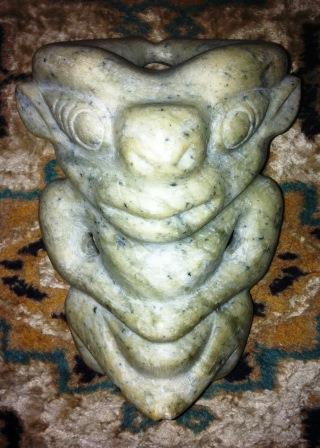
Hongshan Culture Deep Green Jade Human Figurine - Ancient Chinese Neolithic Period Jade
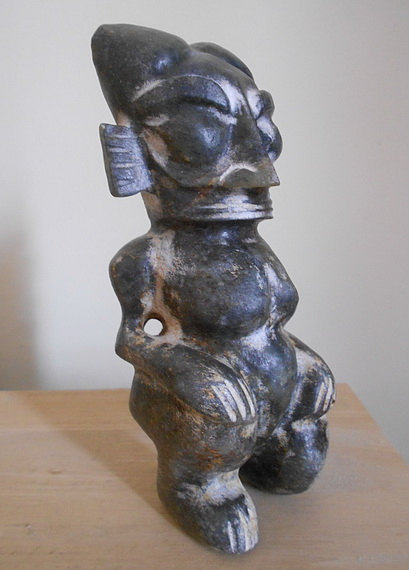
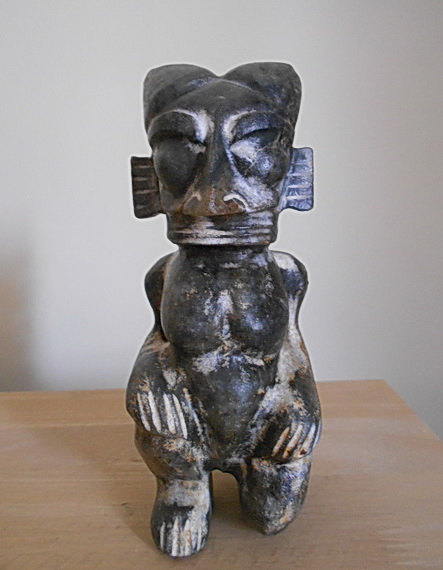
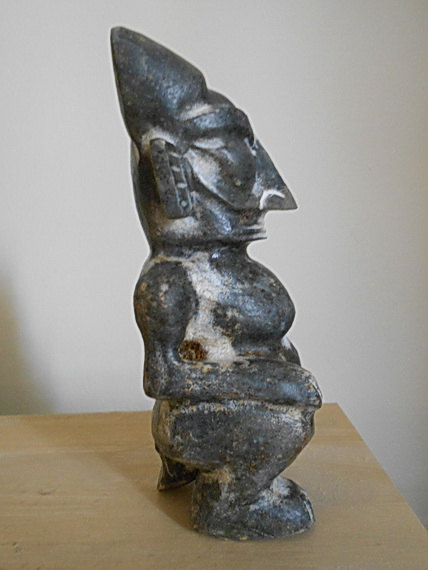
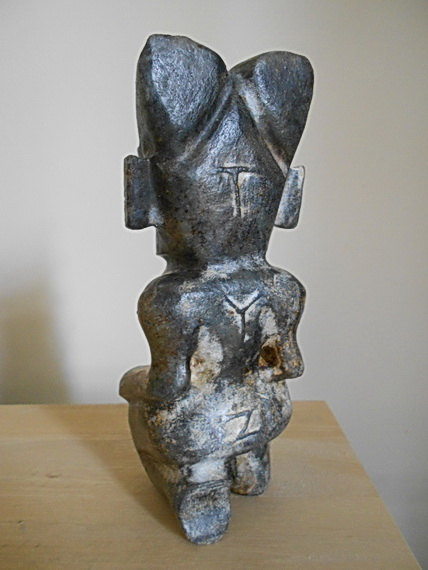
I'll be posting much more in the near future on ancient Chinese relics, I know over the years I've focused mainly on the Olmec, Peruvian and Egyptian early civilizations and cultures until this year...
As Always, Stay tuned.
reply to post by SLAYER69
Pure evil depictions of aliens or demons.
Why would ancient chinese use english alphabet ? TYZ
Pure evil depictions of aliens or demons.
Why would ancient chinese use english alphabet ? TYZ
edit on 4/13/14 by proob4 because: (no reason given)
reply to post by proob4
Yup. They sure are ugly & that one guy sure does look like he's got a T,Y & a Z carved into his backside...
Does anyone have any idea what those alphabet-type markings mean?
Yup. They sure are ugly & that one guy sure does look like he's got a T,Y & a Z carved into his backside...
Does anyone have any idea what those alphabet-type markings mean?
reply to post by SLAYER69
Yeah, possibly being the operative word there. There is zero way to verify the authenticity of the squat green one, and this one...
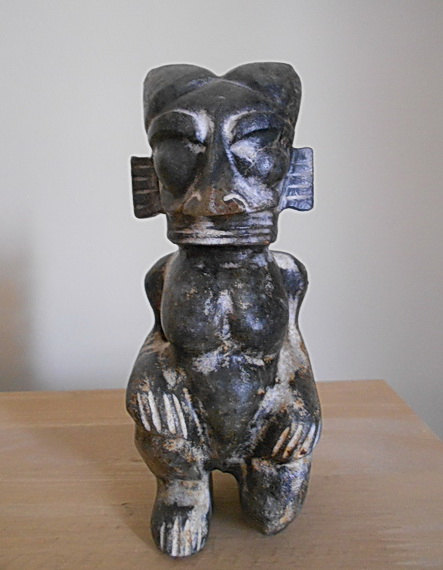
...looks like a lawn ornament and is for sale on Etsy.
I don't buy either of them as being authentic Chinese antiquities at all.
Possibly Hongshan culture sculpture. Only one made of this material in my collection.
www.asianart.com...
Yeah, possibly being the operative word there. There is zero way to verify the authenticity of the squat green one, and this one...

...looks like a lawn ornament and is for sale on Etsy.
I don't buy either of them as being authentic Chinese antiquities at all.
edit on 13-4-2014 by Bybyots because: . : .
reply to post by Bybyots
I find many interesting figurines/relics on auction sites. I wish they were in museums though but often private collectors do take good care of relics. A RARE OLMEC STONE SCEPTER
I find many interesting figurines/relics on auction sites. I wish they were in museums though but often private collectors do take good care of relics. A RARE OLMEC STONE SCEPTER
edit on
13-4-2014 by SLAYER69 because: (no reason given)
Those don't appear to be Chinese letters on the back of the last one. Maybe they were taken as a trade item long ago from a different area.
Something found in China that was made somewhere else, how odd it was years ago. It is like finding something here in America without any parts in it
that were made in China today.
SLAYER69
reply to post by Bybyots
I find many interesting figurines/relics on auction sites. I wish they were in museums though but often private collectors do take good care of relics. A RARE OLMEC STONE SCEPTERedit on 13-4-2014 by SLAYER69 because: (no reason given)
Wow, the prices on that site are high. I don't need to buy something that ugly, I can make that quality stuff myself.
reply to post by rickymouse

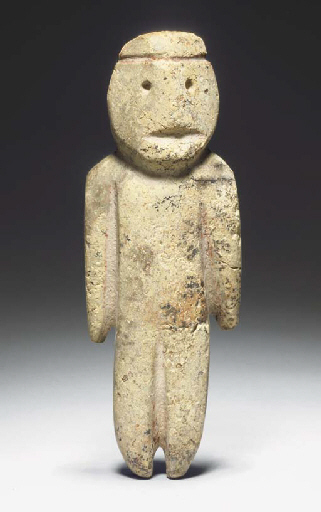


linky
$14,340 (Set Currency)
Estimate
$5,000 - $7,000
Sale Information
SALE 1537 —
IMPORTANT PRE-COLUMBIAN ART: A EUROPEAN PRIVATE COLLECTION
Tihs is real ATS reading that I look forward too. Thought provoking and discovery. I look forward to your posts Slayer and the subjective
commentary. Thank you for this and other readings you've posted.
Regards,
Bally
Regards,
Bally
Those sculptures are stunning!
Very reminiscent of African designs of gods and spirit entities.
They totally refute the often cited concept of "5000 years of Chinese culture".
Chinese culture has been around a hell of a lot longer than 5000 years!
Very reminiscent of African designs of gods and spirit entities.
They totally refute the often cited concept of "5000 years of Chinese culture".
Chinese culture has been around a hell of a lot longer than 5000 years!
reply to post by SLAYER69
Why Indy?
Why do you think that they belong in museums? Some stuff doesn't belong in museums. Also, the Chinese are the world's #1 snake-oil salesmen when it comes to antiquities; as far as I can tell it is some sort of emotional reaction to having their history skewed worse than most. They just don't care, dude: someone digs something up? There are 50 workshops that spring up over night to knock it of.
I find many interesting figurines/relics on auction sites. I wish they were in museums though but often private collectors do take good care of relics.
Why Indy?
Why do you think that they belong in museums? Some stuff doesn't belong in museums. Also, the Chinese are the world's #1 snake-oil salesmen when it comes to antiquities; as far as I can tell it is some sort of emotional reaction to having their history skewed worse than most. They just don't care, dude: someone digs something up? There are 50 workshops that spring up over night to knock it of.
Bybyots
reply to post by SLAYER69
Possibly Hongshan culture sculpture. Only one made of this material in my collection.
www.asianart.com...
Yeah, possibly being the operative word there. There is zero way to verify the authenticity of the squat green one, and this one...
...looks like a lawn ornament and is for sale on Etsy.
I don't buy either of them as being authentic Chinese antiquities at all.
edit on 13-4-2014 by Bybyots because: . : .
that is clearly a depiction of the The Creature From The Black Lagoon....
No?
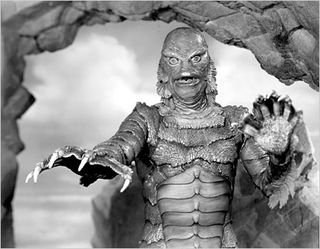
reply to post by howmuch4another
Yes. It sure does. I also really like the Pokemon/Disney eyes on all the objects; they're so comforting.
You know? This just gets better and better...
I hate to sound so mean: but that's exactly how someone that has been ripped off multiple times would try to reason with themselves.
That's from 2007, and I guarantee the Chinese have only gotten batter and more tenacious when it comes to creating these items and floating them as "antiquities.
I honestly feel for the Chinese people and their scholars, they have just about the same trouble sorting it all out that anyone does thanks to the fact that their history is one of constant conquest and social upheaval. People think that the near east has it bad when it comes to trying to understand its antiquities: they've got nothing on the Chinese.
Yes. It sure does. I also really like the Pokemon/Disney eyes on all the objects; they're so comforting.
You know? This just gets better and better...
Currently there is a fad about "Hongshan" jade objects. It seems that they are available every where even at street corners in China. Most would say that they are mostly "fakes". It is impossible to have so many authentic articles that were made 4000-6000 years ago.
For collector like me who have bought many "fake" objects, something puzzling appeared. Those so call Hongshan items appear to vary in age and quality. Some definitely look like made yesterday.
Some look thousands of years old and some look like hundreds of years old.
Since the Hongshan culture was gone 4000 years ago, who made those "Hongshan" items since then?
I believe "Hongshan" type of artifacts have been continuously produced for a long time.
The Hongshan area covers the current southern Siberia, Mongolia, Liaoning, north-east China, traditionally non-Han area. People living in that area have not followed the advance in technology and craftsmanship improvement as the Han people.
Many of them are still nomads.
It is highly probable that they retain the style of jade carving as passed down from their ancestors. If that is true, then one would find Hongshan style objects covering many thousands of years. This would explain the age variety and carving diversity of Hongshan jade objects seen today.
www.asianart.com...
I hate to sound so mean: but that's exactly how someone that has been ripped off multiple times would try to reason with themselves.
That's from 2007, and I guarantee the Chinese have only gotten batter and more tenacious when it comes to creating these items and floating them as "antiquities.
I honestly feel for the Chinese people and their scholars, they have just about the same trouble sorting it all out that anyone does thanks to the fact that their history is one of constant conquest and social upheaval. People think that the near east has it bad when it comes to trying to understand its antiquities: they've got nothing on the Chinese.
reply to post by SLAYER69
Very interesting. Thank you.
Please let me know if you have/find anything similar to the "venus figurines." Thanks.
F&S&
Very interesting. Thank you.
Please let me know if you have/find anything similar to the "venus figurines." Thanks.
F&S&
new topics
-
Scary video of face in an abandoned house
Paranormal Studies: 1 hours ago -
Just Came Across These Unusual Old UFO Pics
Aliens and UFOs: 3 hours ago -
LA Mayor Bass Demanded $49M in Additional LAFD Cuts One Week Before Wildfires
Mainstream News: 5 hours ago -
Sepultura - Territory - With New Drummer Greyson Nekrutman
Music: 6 hours ago -
Carry On!
Short Stories: 7 hours ago
top topics
-
This should be plastered all over the airwaves
Mainstream News: 12 hours ago, 23 flags -
LA Mayor Bass Demanded $49M in Additional LAFD Cuts One Week Before Wildfires
Mainstream News: 5 hours ago, 17 flags -
Archbisop Vigano Warns of Deep State and Deep Church
New World Order: 14 hours ago, 16 flags -
Oh, Good Gosh. “Kremlin Warns Stay Away from Greenland.”
World War Three: 14 hours ago, 11 flags -
Just Came Across These Unusual Old UFO Pics
Aliens and UFOs: 3 hours ago, 4 flags -
Carry On!
Short Stories: 7 hours ago, 3 flags -
Sepultura - Territory - With New Drummer Greyson Nekrutman
Music: 6 hours ago, 2 flags -
Scary video of face in an abandoned house
Paranormal Studies: 1 hours ago, 2 flags
active topics
-
Los Angeles brush fires latest: 2 blazes threaten structures, prompt evacuations
Mainstream News • 372 • : xuenchen -
Trump says ownership of Greenland 'is an absolute necessity'
Other Current Events • 161 • : Imhere -
Dr. Demento
Music • 16 • : baddmove -
Statements of Intent from Incoming Trump Administration Members - 2025 to 2029.
2024 Elections • 64 • : WeMustCare -
This should be plastered all over the airwaves
Mainstream News • 54 • : fringeofthefringe -
Archbisop Vigano Warns of Deep State and Deep Church
New World Order • 9 • : CosmicFocus -
Post A Funny (T&C Friendly) Pic Part IV: The LOL awakens!
General Chit Chat • 8015 • : baddmove -
Carry On!
Short Stories • 2 • : JJproductions -
Scary video of face in an abandoned house
Paranormal Studies • 0 • : ColeYounger2 -
Oh, Good Gosh. “Kremlin Warns Stay Away from Greenland.”
World War Three • 30 • : ARM19688
21

